
Want to Save This Article?
Enter your email & I’ll send it straight to your inbox. And you’ll get new recipes & tips each week.
There are few issues that stir up a group of “crunchy” (naturally-minded, real-foodie, homemade) ladies as much as hand sanitizer.
Okay, maybe vaccines. But, we’re not going there. Let’s stick with dirty hands and the clear liquid found in millions of purses and classrooms across America.
Before kids I had a “thing” (me and my “things”) against dirt, but oh my, how things changed once my first baby entered the picture. Suddenly messes and dirt (and other unmentionables) stuck to my hair, clothes, skin, and house like cheese on a good grass-fed burger. The need to embrace dirt (not being dirty, just a few extra clingy good germs) became apparent.
Here’s the funny thing about dirt: the more I embraced it, the less we got sick. I’m sure a good diet also helped, along with natural preventives such as: probiotic kombucha, elderberry syrup, and homemade chicken broth.
Now, please hear me out. I’m not talking about smothering our bodies in buckets of dirt and rubbing our hands on every public grocery cart in the store. Please don’t do that! Instead, let’s avoid the constant urge to sanitize our living conditions with millions of toxins in a state of paranoia. Cleaning is good, very good! But a little bit of healthy dirt (allowing our kids to run around outside, garden, and get dirty every now and then) is wonderful for the immune system. In fact, our guts need good bacteria to fight off the bad guys–this is an important aspect to having a healthy and thriving immune system.
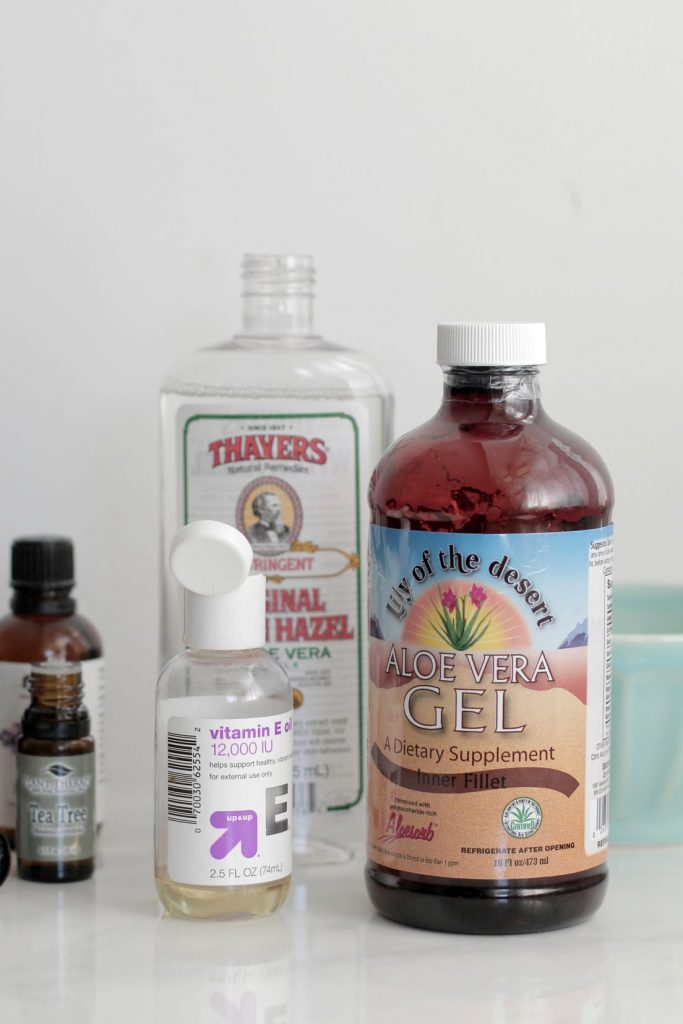
Before we throw away our soap and hand sanitizer, I would like to tell you that I believe in cleanliness. I believe a good liquid hand soap is important to stock in the kitchen and bathroom, laundry soap is a necessity (obviously), and body wash is a smart choice. I also believe hand sanitizer has a time and place: after handling money or touching the never-washed grocery store carts.
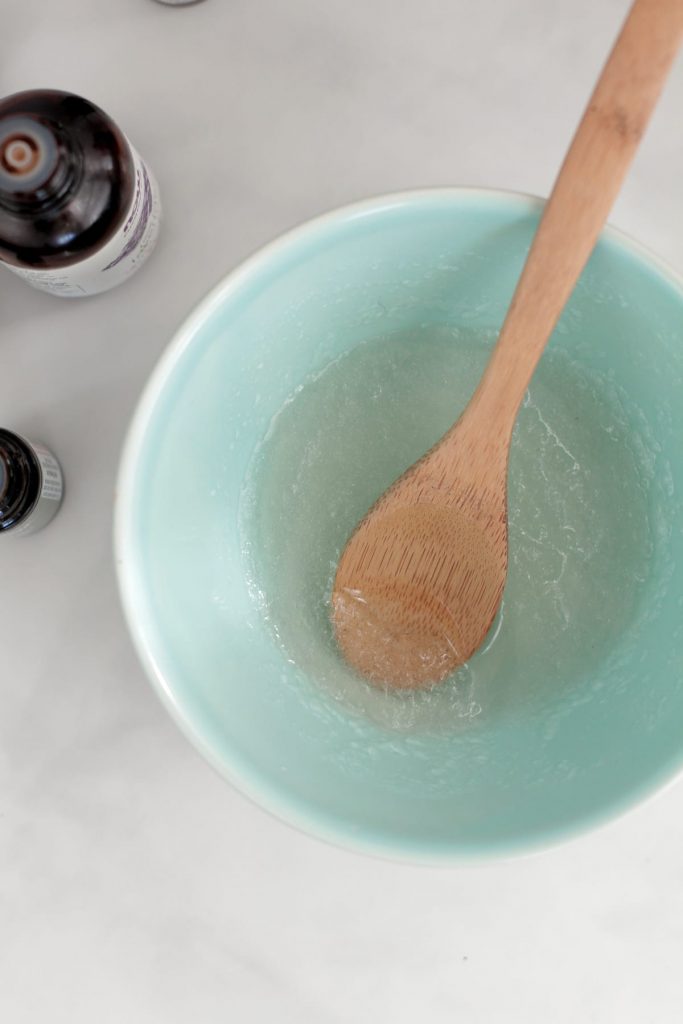
For those times when good ol’ soap and water just aren’t available, and hands needs to be washed, I keep a homemade hand sanitizer in my purse, made with a few simple ingredients.
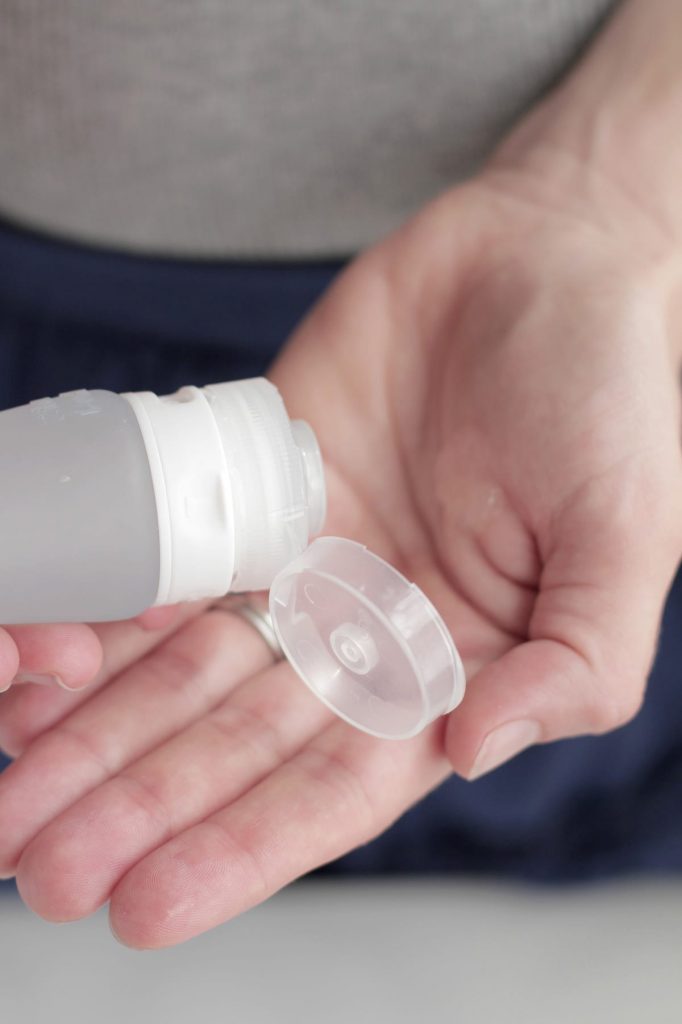
Let’s embrace good hygiene, naturally. I promise it can be done.
More Natural Ways to Protect Against Unwanted Germs
- Homemade Hand Sanitizer Spray: A simple spray for when you need to wash your hands and don’t have soap and water. If you want a spray instead of a gel, this recipe is for you.
- Homemade Disinfecting Spray: A spray for counters and surfaces made with tea tree essential oil, vinegar, and water.
- Natural Ways to Boost the Immune System: My tried-and-true ways to naturally maintain a healthy and happy immune system.
- Homemade Elderberry Syrup: A homemade remedy that’s delicious and beneficial.
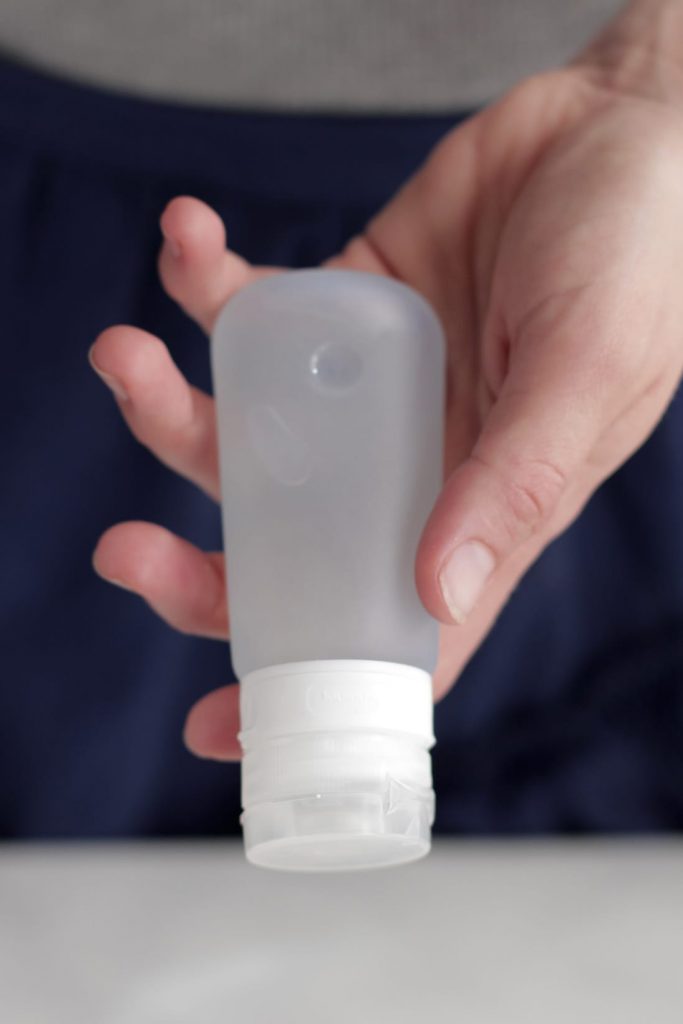
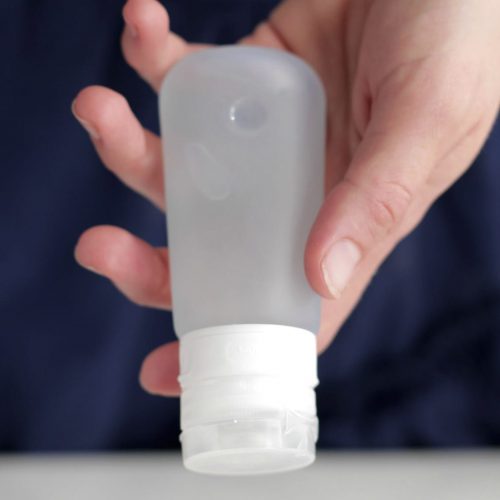
Hand Sanitizer
Ingredients
- 3 TB 190 proof alcohol or at least 120 proof alcohol or 70% or higher isopropyl rubbing alcohol (the original recipe called for witch hazel, however, alcohol is considered the best and what's currently recommended in light of recent issues). Don't use other types of alcohol (methanol, butanol) since they're toxic.
- 1 TB aloe vera (this is to prevent hands from drying out from the alcohol)
- 1/2 tsp vegetable glycerin or vitamin E oil (optional, again adds moisturizing properties to the hand sanitizer to benefit your hands)
- essential oil (optional, like a few drops of tea tree or lavender essential oil) see note below
Instructions
- Combine all the ingredients in a bowl.
- To use the hand sanitizer store in a small jar or a squeeze tube (like this). This recipe will make 2 fluid ounces (one tube.) If you prefer to make a spray, use this recipe.

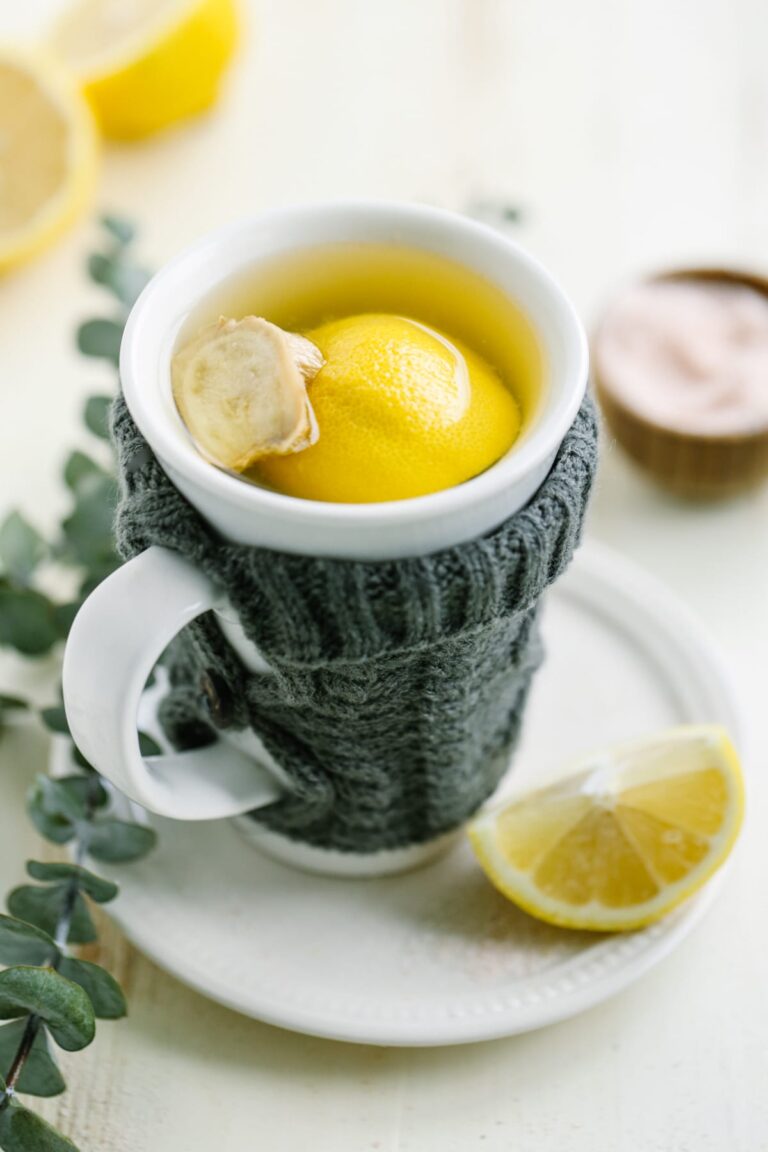
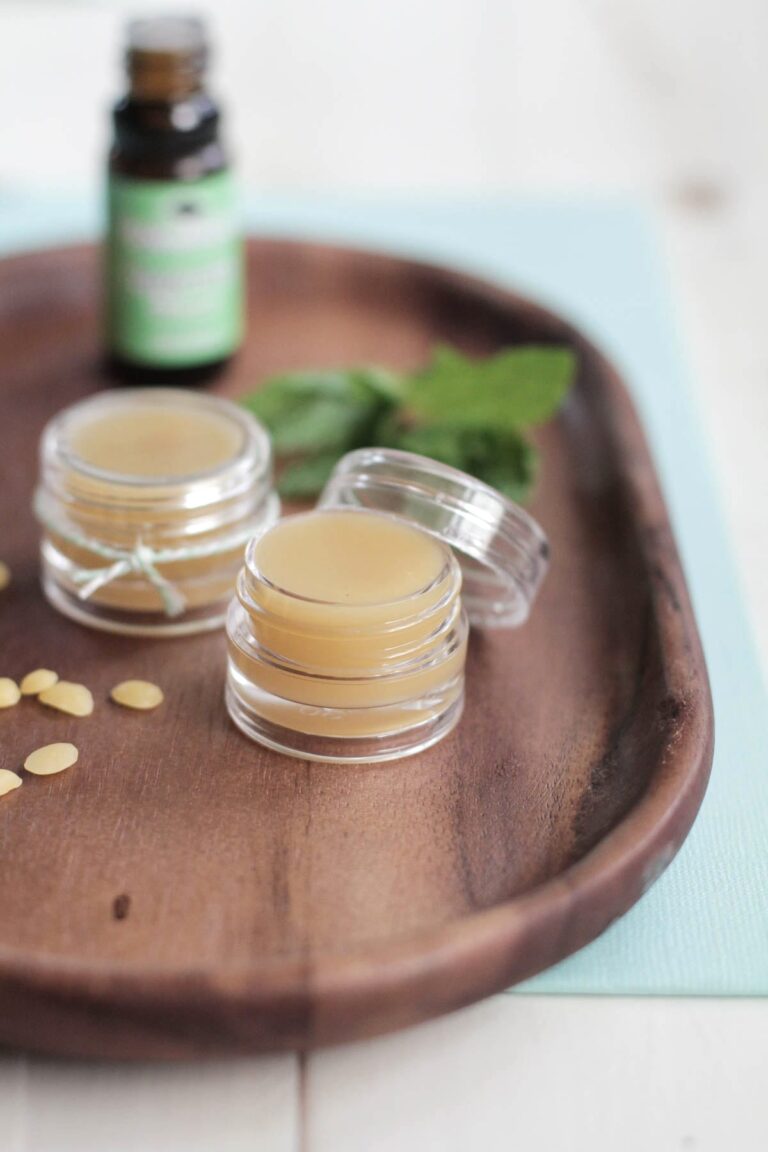
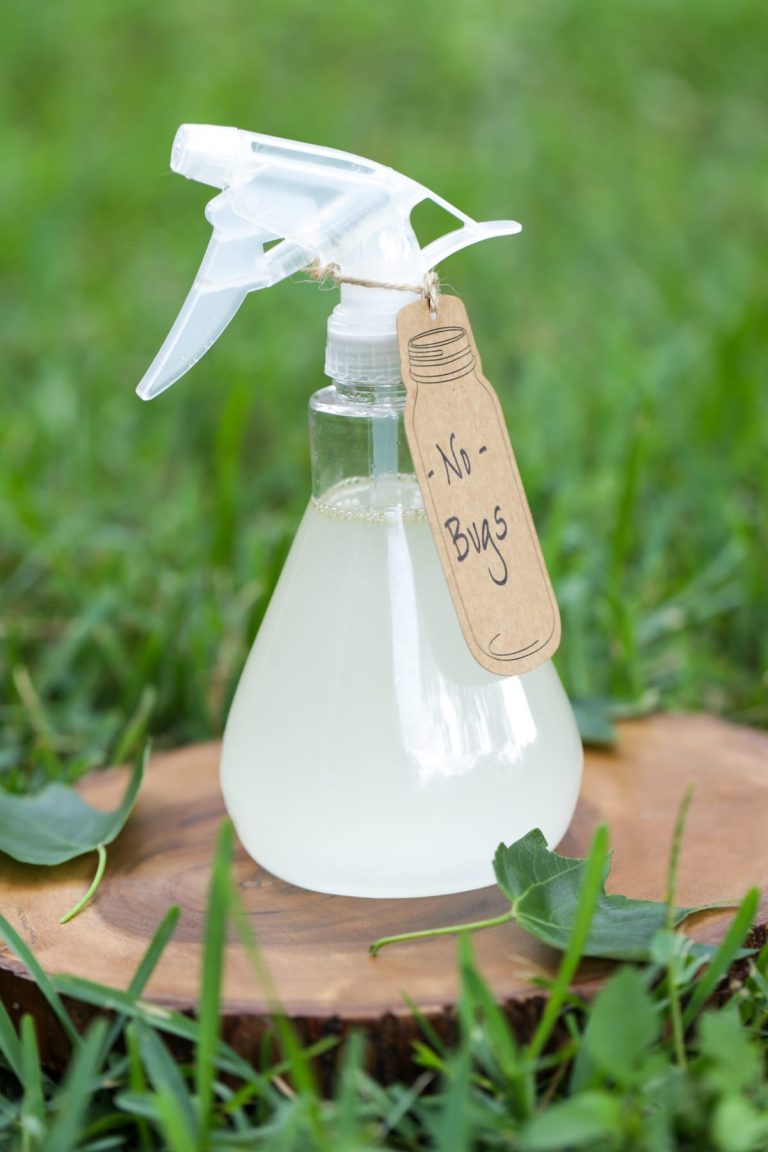
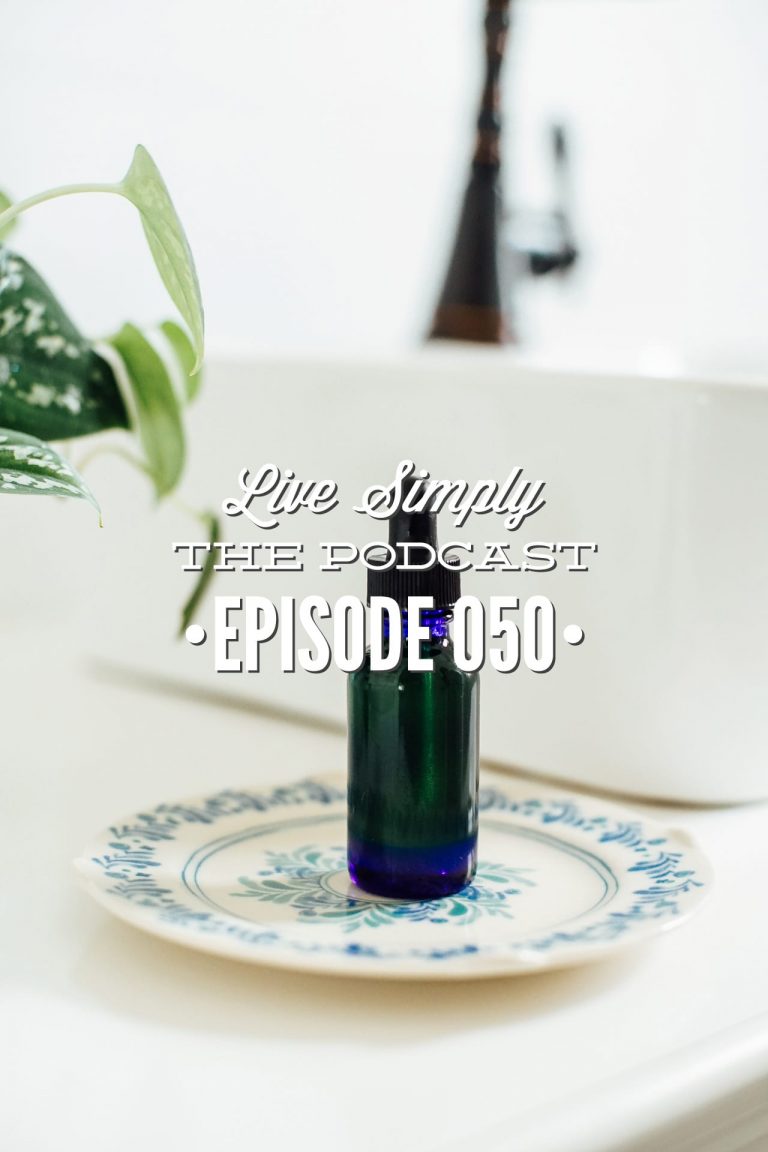

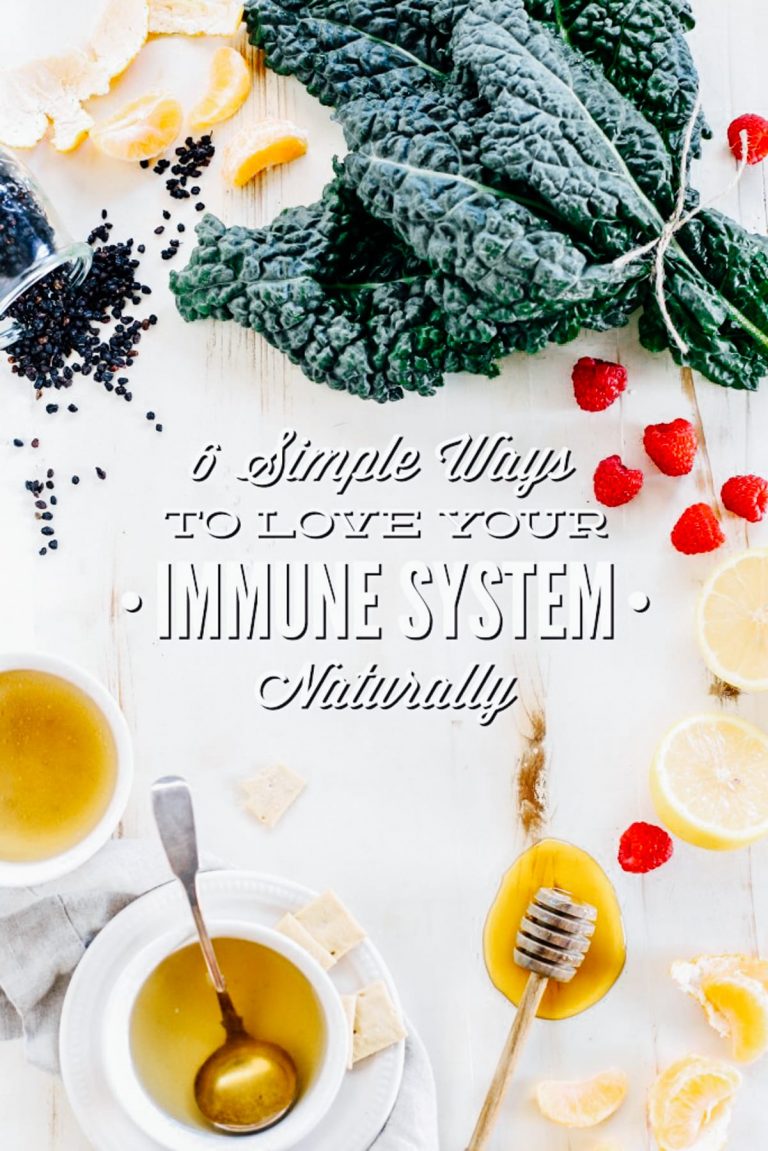
Hi Kristin,
My son’s class wants to make this recipe in 50ml foaming bottles. Could you please tell me if the recipe needs to be adapted to foam? Thank you..
Hey Michelle, The recipe will work perfectly in a foam dispenser :). Enjoy!
I was just wondering what made this a hand sanitizer? Is it the witch hazel or the essence oils? I’m asking because I would like to use a different scent.
Hey Pamela, Yes, both. I would keep the tea tree oil in the recipe, but you could sub the lavender with a different oil for scent purposes.
This is great. It has also been pinned so many times that it made the list Cariloha published on the most popular environmentally friendly pins!
Thanks so much, Jennifer.
I’m in the process of changing over to all natural, and mostly homemade products. I was excited to stumble across this post, as I never considered making my own hand sanitizer! This sounds like a great recipe-I can’t wait to try it! The only thing that doesn’t add up is that you stated the amount of EOs are based on a 0.5% dilution, but 24 drops of EO in 2 ounces of finished product is actually a 2% dilution. Just thought you might want to change that so people aren’t thinking they’re using a more dilute formulation, especially if they’ll be using it on kids.
Thanks, Melissa! We’ll get that fixed. Enjoy!
I am planning on making this using Young Living’s Thieves Essential Oil, since it is great for immune support! I was wondering one thing. I bought a couple of the little 2oz bottles of Aloe Vera, would it mix together well if I just emptied out some of the aloe into another container, and add the other ingredients into the bottle and shake well?
Awesome, Jennifer! I think mixing the hand sanitizer in the 2oz. bottles of aloe vera is a great idea!
Love this recipe! I did add one teaspoon of coconut oil. My hands feel so soft and smell lovely!
Thank you!
Awesome, Josie-Lynne! ❤️
Just found your site through Pinterest and I can’t wait to try this hand sanitizer along with some of your other recipes! I made the switch to homemade cleaners last year in an effort to reduce waste. I’m excited to see recipes for laundry detergent and several other things that I still buy but hope to make. Thanks for the inspiration!
Awesome, Shelley! Welcome to Live Simply.
Where did you buy that storage for the sanitizer? I really like it
Hi, The storage tube pictured is the Humangear GoToob Travel Bottle. I purchased my set from Amazon (here’s a link), and I just recently noticed Target sells them in the travel (suitcase/backpack) section of the store.
i accidentally used aloe Vera juice instead of gel, is there anyway to fix what I have mixed. I hope I don’t have to throw it away!
Hey Coral, Your hand sanitizer will still work great, it may just have a runnier consistency. Enjoy!!
I stumbled upon your blog this morning (along with Humblebee) and am so glad I did – lots of great ideas and recipes. My youngest son has an immune deficiency and for a year and a half he could not even go outside due to potential fungus blowing in the wind and pathogens lurking in the ground. While his situation is not nearly so precarious, germs are still an enemy and we sanitize frequently at home – I’m also an RN, so sanitizing is my job! I’ve been looking for something more natural and am grateful for this recipe. Thank you!
Hey Glennae, I’m so glad you found Live Simply and the Humblebee this morning! Welcome! My mom is an RN and every time we visit her at work, we always carry our homemade hand sanitizer. I think you’re going to love the homemade version. Enjoy!!
thank you for this recipe! I made it tonight. Works great! Also pumps through a pump bottle.
Thank you for sharing, Jeanna! Enjoy the hand sanitizer :)!
Hi, this is exactly what I’ve been looking for, so thanks. 🙂 I am wondering how you determined the dilution rate for the essential oils? Every chart I can find shows 24 drops of EO per 2 ounces of carrier is more like a 2% dilution. Which I’m fine with; just wondering.
Also, what do you think of f subbing 1 Tbs of vegetable glycerin for one of the Tbsps of aloe? More softening, or more sticky?
Thanks!
Hey Jones, I used a basic dilution chart, but also catered the recipe toward our scent preferences. You’re welcome to add more or less of the essential oils, if desired and based on the 2% dilution. Adding more glycerin may cause the hand sanitizer to be runny, but that’s just my initial thought…I haven’t tried making the substitution. If you try it, let me know how it goes.
Hi Kristin, thanks for the update. I guess I was confused because the instructions said “based on .5% dilution.” Anyway, I did try adding glycerin. Initially I used 2 Tbsp Aloe gel, 1 Tbsp glycerin & 1 Tbsp alcohol (instead of witch hazel), and you’re right, it was runnier. Interestingly, and unlike the original batch, there was room in the container for an additional Tbsp. of Aloe, so I added more. It’s full to the top, but it solved the runniness issue. 🙂 That said, I’m not so sure I like the feel of it as well as the batch without glycerin. It’s doesn’t leave my hands feeling sticky, exactly, but something. Thanks again, this is a great recipe and I see a number of others on your site that I’m looking forward to trying.
No problem, Jones :). I apologize for the confusion. Thanks for sharing your experiment…it’s always fascinating how one or two little tweaks can change a recipe.
I made this sanitizer and love it! I am wondering however if it has to be refrigerated as the aloe Vera gel bottle says to refrigerate after opening. I mainly keep the sanitizer in my diaper bag and I know I will forget to grab it from the fridge and hence not have it when needed. Any info you can share on this would be great.
Hey Jo,
Most homemade hand sanitizers are used fairly quickly (a few weeks to a month), so I don’t refrigerate my hand sanitizer, but the leftover aloe vera should be stored in the fridge for long-term use. If you plan on making enough hand sanitizer to last long-term, I would store the extra in the fridge until needed. Hope that helps :). Aloe vera is a plant and can be used a dietary supplement which is why most pure aloe vera brands recommend the refrigerator for storage (in my opinion and experience).
I think the aloe needs to be refrigerated on
It’s own, but the alcohol once mixed with the aloe gel should keep it germ free and fresh.
Hi :3 i have a question, can i change the witch hazel for rose water?
Hey Rosa, I believe rose water will sub well for the witch hazel.
Can tea tree oil be subbed for the tea tree essential oil? Is there a difference? Thanks.
Hey Ariana, I would stick with tea tree essential oil. They may be the same depending on the brand as some just say “tea tree oil.” I would double check on the ingredient list to make sure the only ingredient is tea tree oil.
Hi! Can this be stored in plastic bottles due to the essential oils? They will be diluted so do you think it would be ok? The plastic bottle can then be refilled after use. Thank you!
Hey Nichi, For a short-term, I think it’s fine. For long-term, I wouldn’t.
Hi, what is the benefit to using essential oils in this sanitizer? I have a sensitivity to most smells and would prefer them not to be on my hands for hours…could I leave out all essential oils and have this still be an effective germ killer?
Hey Christina, The essential oils help in killing the germs :), they are both antiviral and antimicrobial.
I am slightly allergic to lavender. Would I be able to substitute the lavender essential oil for a different scent?
Hey Kristine, I would use something like orange essential oil if you have it or you could just add a few more drops of tea tree. The lavender is more for the beneficial properties than scent, but those two oils can be substituted.
I would be careful with adding any Citrus Essential Oils. Citrus EOs are photo-sensitive; which mean they can cause burns when exposed to direct sun light.
Some EOs like Lime can be safe to use depending on how they are produced.
Hey Scoobie, The only two oils needed for this recipe are: lavender and tea tree. So you won’t need any citrus oils. 🙂
is their another cheaper and easy-to-find materials/ingredients to use?
oh,and i’m planning to use this as our investigatory project in science
Hey Ashley Jane Tojoy,
I can’t recommend different ingredients in this particular recipe as I haven’t experimented with any other ingredients. The best option may be to pick up the majority of the ingredients from a CVS or Walgreens. And then find a local store or Amazon for the essential oils. That would probably be the cheapest way to make this recipe.
Thanks so much for all your great information and “recipes”.
I’ve seen recommendations that when buying commerical hand sanitizer that it have 60% alchol at a minimum. Do you know how much alcohol is in witch hazel? In other words, would this (really good sounding formula!) have enough to be truly effective? Thanks!
Hey Linda,
You’re welcome :).
The main ingredient in store-bought hand sanitizer is water (along with alcohol, aloe vera, and other ingredients.) The witch hazel doesn’t contain as much alcohol as a pure alcohol does, but it’s still highly effective, particularly when paired with the tea tree and lavender. You can also use rubbing alcohol or even vodka, just reduce the amount by a tablespoon because it’s a bit more harsh on the skin.
I made this this afternoon and my hands feel so soft! However, I really struggled to get the gel into my squeeze container. Maybe this is just a novice problem and a stupid question, but I ended up wasting some of my precious essential oils (although I must say, my countertops smell very nice now!). I tried piping it through a ziploc with a hole cut in the corner, but it wasn’t ideal. Suggestions?
Hey Erica, I’m so glad you’re hands feel soft! I’m sorry you lost some oils. Are you using the tubes? If so, I use a funnel to pour the hand sanitizer into the tube. I hope that helps :). I usually get a bit more than a dime size amount (more like the size of a nickel) when I squeeze the tube (once sealed and ready to use), so I just share the love with the kids :).
In addition to nasty chemicals in store-bought brands there is also the issue of overuse–folks keeping everything sanitized allowing no exposure to germs. I assume you can do the same with natural ingredients. Hyper-clean OCD-style germ destruction can be the same with EOs as it is with chemicals, right? You’re avoiding the propylene glycol and the FD&C Blue No. 1 but you’re still not giving your body the chance to meet the germs that will help you become stronger. I’m not sure I’m explaining this very well. What do you think?
Hey Sara, I totally agree. I hope I represented my belief well in the post :).
I have read that lavender can cause problems for boys, messing with their endocrine system and inhibiting proper development. Do you know anything about this?
This revolves around a test regarding synthetic lavender oils (Such as what you would find in a bedtime wash off a walmart shelf or a lavender oil from a health food store. You get what you pay for ALWAYS. ) and does not apply to 100% pure essential oils. Know your farmer, Know your distiller, Know their quality standards.
Hey Ashley, Thank you for sharing. It’s always good to know where your products are coming from. Thankfully, there are a number of very reputable essential oil companies out there, including a couple from the health food store.
Hi, may I please know if I can use aloe vera gel scraped straight from aloe plant? Thanks!
Hey Arbee, Yes, you can, but you’ll need to keep the solution in the fridge and use it very quickly–probably within a week.
One thing I saw in another DIY was to sanitize all the objects used to make this – including hands – and let the mixture sit in fridge for 72 hours to allow any germs or viruses to be killed before use.